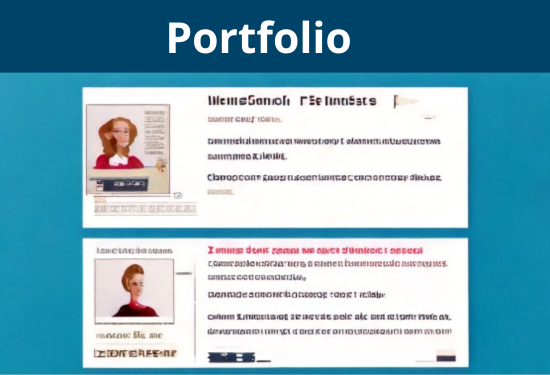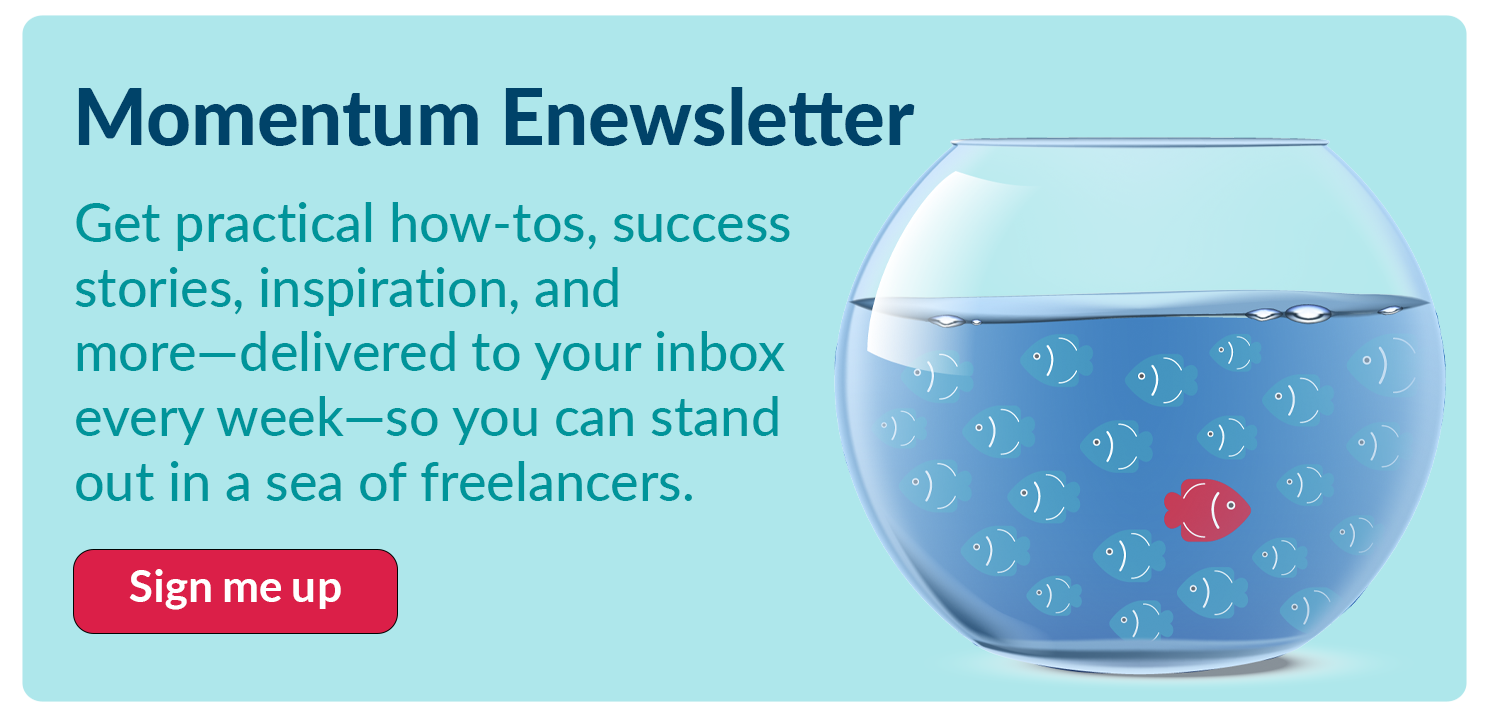How to Create a Portfolio That Wins Clients—Even if You’re New

Key Takeaways
- Build your portfolio for your target clients, not for everyone.
- Use 6 to 10 high-quality samples, including spec or mock work, if needed.
- Add a short project description for each sample, including goal, audience, role, and result.
- Share your best work on your website and in LinkedIn’s Featured section.
- Get permission for client work, share only public content, and protect confidential info.
Clients want to see that you understand their world, write or edit with accuracy and clarity, and deliver work on time. Your portfolio helps them do all of this.
More than a collection of work, your portfolio shows your strengths and highlights what you can do. You can build a portfolio that impresses clients, even if you don’t have much experience yet or your work is proprietary and you can’t share it with other clients. Here’s how.
Plan for Your Target Clients
Before you collect or create samples for your portfolio, get your focus right. Choose or confirm the type of clients you want to work with so you can include samples that matter to them. These are your target markets.
In medical writing and editing, for example, target markets include medical communication agencies, hospitals/health systems, and pharma and device companies. The needs of each of these target markets—and the samples they want to see—are different.
Choose Samples
Samples don’t have to be from client work. Think broadly about what you’ve done that you can use as or revise to be samples, including assignments and projects from:
- Courses or other training programs
- Degree programs
- Jobs
- Volunteer work.
You can also develop spec or mock samples. A spec sample is a fictional sample that’s like a project you would work on for a client. These are useful if you:
- Are a new freelancer
- Are an editor
- Do proprietary work
- Want to break into a new type of work.
If you’re an editor, you can create Before and After samples to show what you’ve done on a project. You can’t do this with client work because you’ll offend the client and drive away prospective clients.
Here are a few ideas for spec samples in medical writing or editing:
- Write or edit a lay summary of a new peer-reviewed study, link to the source.
- Create or edit a patient handout on a common condition, like type 2 diabetes.
- Draft or edit a CME outline with objectives, target audience, and assessment ideas.
Focus on quality, not quantity
Aim for 6 to 10 samples that show both range and depth in the work you’ve done or can do for clients in your target markets:
- Leads with your most impressive or relevant work.
- Include a range of relevant samples
- If you’re an editor, include before-and-after editing samples (spec samples or samples from courses or degree programs).
Organize your samples either by type of work or expertise (e.g., areas of therapeutic expertise).
Add context to each sample
Turn a good sample into a great sample with a concise project description. Include the goal, audience, and your role. If you have information about the results, include that too. Examples of results are:
- Fewer reviewer edits
- On-time approval
- More audience engagement.
There are several ways to do this. Here’s one way with examples for medical writing and editing.
Journal article:
- Title: A Direct-to-Patient Digital Health Program for Lung Cancer Screening: A Randomized Clinical Trial
- Role: Writer and reference lead
- Goal: Clearly and accurately communicate new scientific knowledge
- Outcome: Approved with minor edits and published in JAMA
Patient education:
- Title: Understanding Metformin, Patient Leaflet
- Role: Writer
- Goal: Plain language content written at the 6th grade level
- Outcome: Improved readability and the clinic reports fewer follow-up calls
Regulatory:
- Title: US Prescribing Information, Labeling Update
- Role: Editor
- Goal: Integrate new safety data and risk statements
- Outcome: Accepted by reviewers on time, no rework requested
Another approach is to make your project descriptions read like mini case studies, using this template:
- Context
- Challenge
- Approach
- Outcome
Here’s an example:
- Context: A large health system needed a COPD patient guide.
- Challenge: Reduce readmissions and keep the guide at a 5th grade reading level.
- Approach: Plain language rewrite, icon-based layout, and teach-back prompts.
- Outcome: Clinicians reported fewer questions.
If your work is proprietary, include more information about your work, without identifying the client, drug, or device, or mentioning anything confidential
Where to Share Your Portfolio
Share your portfolio with clients on your website and on LinkedIn.
Your website
Your website is a powerful marketing tool for showing clients that you’re the right choice for them. And your portfolio page is one of the essential pages of any freelance website.
You can call this page Portfiolio, Samples, or Work. Work is a good choice if your work is proprietary and you aren’t actually sharing samples.
More clients are searching for freelancers on LinkedIn and checking us out when they hear about us. So LinkedIn is a great place to share your top samples. Include three to five samples in your Featured section. And make sure you include the link to your website under Contact and About.
Make Your Portfolio Scannable
Clients are busy. If your portfolio doesn’t look good and isn’t easy to scan, they’ll move on to the next freelancer on their list. Keep your portfolio simple, neat, and easy to scan. Organize your samples by project type, audience, or therapeutic areas. Use subheads for each category.
Make sure your portfolio loads fast and is easy to use. Use a responsive design that looks good on phones, tablets, and computers. Use an appealing design with white space, headings, and short, readable content. Images of each sample are a nice touch.
Protect Your Reputation and Your Clients’ Work
Make sure your portfolio is safe and ethical:
- Always get permission to share client work. Before posting anything you worked on for a client, ask if you’re allowed to include it in your portfolio. Most clients are fine with this as long as you check in first.
- Share only public-facing content. Never post drafts, paid content, or anything developed for internal use only. Stick to what’s online or what your client says is okay to share.
- Limit personal details. Strip out any private or sensitive data (like client addresses or business information) before posting. Focus on your contribution, not behind-the-scenes details.
- Consider using excerpts. If you can’t share a full piece, post a short section or summary and explain your role. This still lets your skills shine without stepping on any privacy toes.
- Never share proprietary work. In fields like medical communications, much of the work is proprietary. You can’t share this.
Build trust with clients by asking for permission to share samples, protecting proprietary and sensitive material, and showing you play by the rules.
Open Client Doors Faster
Stand out in a sea of freelancers and quickly show clients the value you deliver with a strong portfolio. Start building or refreshing your portfolio today. Don’t wait until you have “enough” or “the right” samples. Just put your best work forward and update as you go.
Quick Start Portfolio Checklist
- Pick three to five samples that fit the freelance work you want
- Write a short description for each sample
- Organize your work for easy scanning
- Share results or feedback if you have them
- Double-check privacy and permissions.
Updated October 2025 by Lori De Milto.

Learn More About Winning Portfolios
How to Create Spec Samples to Attract Your Ideal Clients
How to Win More Clients with Your Freelance Website and Do Less Marketing
A Behind-the-Scenes Look at 3 Professional and Awesome Websites
The Ultimate LinkedIn Profile for Freelance Success This Year
FAQ
How many samples should I include in my portfolio?
Aim for 6 to 10 strong, relevant samples. Lead with your best work.
Can I use work if it is proprietary or I signed an NDA?
Do not share proprietary work. Ask for permission and share only public content or use spec samples.
What if I am new and have no client projects yet?
Create spec samples or use work from courses, jobs, or volunteer projects. Editors can show Before and After samples.
What should I include in each sample description?
Include the goal, audience, your role, and the outcome. Keep it short and clear.
Where should I host and share my portfolio?
Publish on your website and add three to five top samples to LinkedIn’s Featured section. Link back to your site.